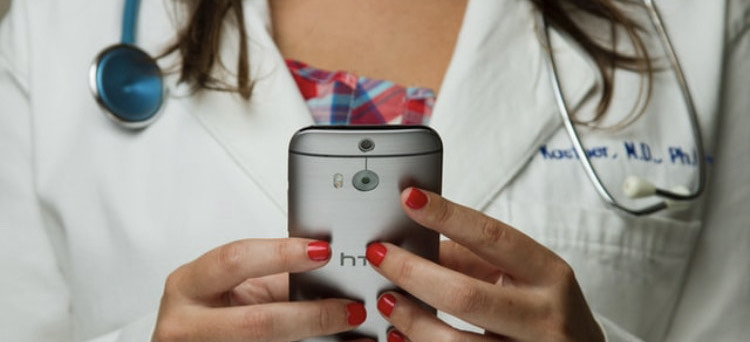D&HHS Offers Expertise and Assistance on Telehealth

A recent Associated Press story said that “… telehealth is a bit of American ingenuity that seems to have paid off in the coronavirus pandemic.”
For Deaf and Hard of Hearing Services in Kentwood, the expansion of telehealth is a good thing but also something they say people need to be very careful with.
D&HHS executive director Deb Atwood said that if people think of telehealth as a product, then they should come to D&HHS for product support and advice.
The organization serves 27 counties in West Michigan and prior to Covid was filling 400 interpreter jobs per month.
“When it comes to the Deaf, DeafBlind and Hard of Hearing,” she said, “when it comes to the Americans with Disabilities Act and access, when it comes to interpreters, we are the experts. We can show people the best ways to use telehealth, provide the right, qualified interpreters for the job and make sure the entire process works the way it should.”
Linda Vander Leek, the Interpreter Services Specialist for D&HHS, added that while telehealth allows the Deaf, DeafBlind and Hard of Hearing to have easy access to healthcare in the the same ways it does for hearing individuals, “it is really important to remember that each individual has unique communication and visual needs, so checking with that individual if telehealth is a good fit for them or not is going to be a necessary first step in the process.”
Vander Leek’s work for D&HHS includes a lot of education and advocacy. She heads up the organization’s vital Interpreter Services program, including working with interpreters and the for-profit and nonprofit organizations that need interpreters to serve their Deaf, DeafBlind and Hard of Hearing employees, customers and clients.
Prior to Covid-19, Vander Leek said, it was often a challenge to get organizations to remember that the Americans With Disabilities Act requires them to provide sign language interpreters or other effective means of communication for the Deaf, DeafBlind and Hard of Hearing. As organizations scrambled the past six months to re-think how they do business, ADA accommodations sometimes got lost in the shuffle.
D&HHS has been able to step into many of those situations and help people get access to the services they need, advocating for the Deaf, DeafBlind and Hard of Hearing as they have been since their founding in 1995.
“We are making recommendations on how to incorporate a third party, the interpreter, so these communities can have equal access,” said Vander Leek. “We also have directed facilities to online resources that highlight a variety of platforms that are HIPAA compliant, and we are helping them work through the few additional steps they might need to take to accommodate our communities.”
The Associated Press story on telehealth noted that in the midst of the worst of the coronavirus shutdown, telehealth was 40% of primary care visits for patients with traditional Medicare, up from 0.1% prior to the pandemic. And a poll of older adults by the University of Michigan Institute for Healthcare Policy & Innovation, the story added, showed 70% like the idea of telehealth for physician follow-ups while close to 70% are comfortable in general with video conferences.
D&HHS’s Vander Leek said the experience of the Deaf, DeafBlind and Hard of Hearing, as well as interpreters, has been similar.
“It’s not a perfect solution,” she said. “There is still something very important, for example, about having a client, an interpreter and a doctor in the same room. But with something like Covid, I think we all realize that perfect isn’t always possible. Our goals as an organization are that we will continue to adjust and adapt to ensure the Deaf, DeafBlind and Hard of Hearing communities have the best access to healthcare and equal access to communication as telehealth continues to evolve.”
